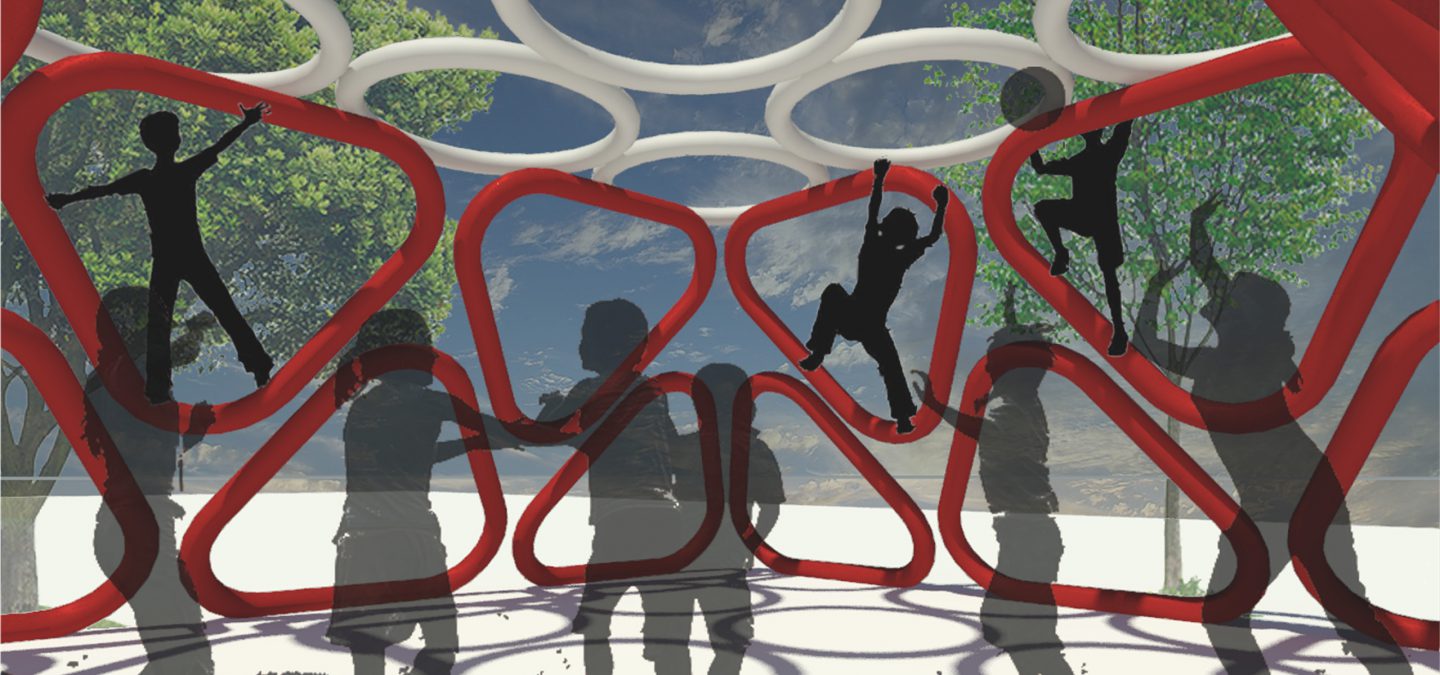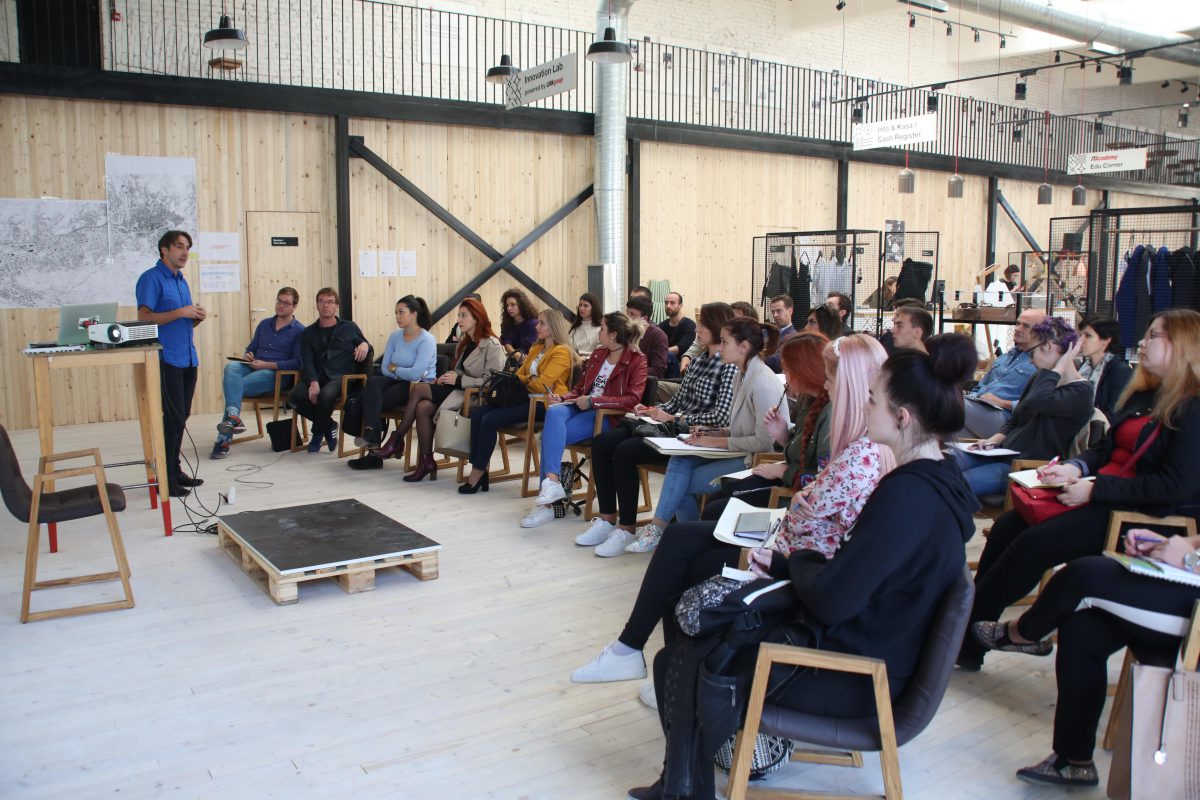
Keep up with our latest news and projects!

Can you briefly talk about the background and motivation to initiate the project ‘Urban Playscape’* in Sarajevo?
I started my own studio during the time of the last economic crisis. It was a point for me to reconsider what I wanted to do, which themes are relevant in our praxis. After the wartime, I often came to Sarajevo with my children. One of the things that were (and are) remarkable is the absence of place for kids to play in the city. In recent 10 – 15 years, the situation was not getting better. I discovered that the Dutch architect Aldo van Eyck started his career in a similar situation. In his case that was after a second world war in Amsterdam. In that post-war period, he designed almost 700 playgrounds in the city of Amsterdam. Most of them were temporary, very precisely integrated into the context, now, unfortunately, only seventeen of these playgrounds are left in the city. His method of putting temporary playgrounds considering a context I find very interesting. I used this method in my research.
For me as an architect, it was interesting to work in a different area. The position and role of the architect are changing: we become increasingly involved in social design processes in different stages.
 Workshop in Sarajevo
Workshop in Sarajevo
Since it’s an international project, how do you adapt and develop a methodology that connects professions in two countries together?
I brought different architects, designers and architecture historians together from the Netherlands. In Sarajevo, workshops were organized by Dutch designers, Bosnian designers and design school students to work together. In between the workshops, we’ve also organized meetings, discussions, lectures, etc. This is still an ongoing process.
The ideal plan was to analyze from macro-scale playscape then zoom-in to micro-scale intervention of play space. We first maps out areas have different characters in the city can potentially develop into playscape. At meso-level, we looked at the connections in-between areas, like riverfront as open spaces. At micro-level we were planned to work on design intervention in specific locations.
However, later we found that in reality, it is difficult. Because the current political agenda is highly prioritized real estate development upon public spaces. The government in Bosnia switched from the socialist system – where everything was collective and good organized – to a very hard, individual capitalistic system now. The market developed so fast and there is a lot of pressure, it’s a tough time.
How do you work to cope with the reality challenge?
Places that have the potential to develop into playscapes are also interesting for developers. One of the results for the workshops was to try to put this on the agenda and get in touch with these developers. The problem is transparency. As many developers and investors are from countries outside of Bosnia, it is difficult it’s hard to find information about these developers so it’s hard to reach them. However, in the process of working, we see how young designers are inspired. They are hope. A lot of young people are really involved and really want to change something. We should be finding a way to involve developers (private clients) in our project. The reality should become part of our project. That is to become part of the next step in the process.
What are the main problems of public play spaces in Sarajevo?
What we have discovered, is that there is no lack of space, but they are not used as such. There are a lot of potential places in Sarajevo where you could do such kind of interventions, but it’s really hard to carry out if the government doesn’t give support.
Opposite are countries like The Netherlands: here we have a strong government. They will put playgrounds and playscapes on the agenda. But in countries with a weak government, it’s a challenge. Taking Aldo van Eyck as an example, in the post-war period, Jacoba Mulder, the chief government at that time, and Cornelis van Eesteren, they realized that they had to improve the quality of the city. So they gave Aldo van Eyck, as a designer, a proposal to build playgrounds to improve the quality of public space.
As urban planners, we look at different scales. How do you see the connection from the macro scale to micro-scale?
It is very important to make connectivity between those scales of the typography of the city and urban plans of the neighbourhood. Because of the presence of a lot of places in between – like natural borders – there is a lot of space to find which you can develop. We are looking for those spaces. We want to connect them, bring continuity in them, also on a social level, to give it more value.
In terms of City At Eye Level for kids, what have you found in this project?
First, I hope the city will be given back to pedestrians. Copenhagen is a really good example of this development in a city. I think it’s the future solution. In this project, we have a lot of discussions about giving space for children in the streets. For example: to make the routes for pedestrians in the city, for children as well. Especially in Sarajevo, there is a lot of space for optimization.
Nowadays playgrounds are really homogeneous. In terms of playgrounds and playscape, diversity is important. Such as diversity ages of citizens (even for an adult), multifunctional and multi-player oriented. Together with different environmental context, the playscape is a diversity topic to discover and to experience from the body.
The city interior is getting more and more important as well, especially the notion of the street. The street has a pivotal role in the urban network. ‘Play’ in an urban environment should also be regarded as ability to discover the city on the street. The childhood doesn’t stop when you are 10 or 15 years old or in the playground, we adult need it as well. For children, it is more obvious, more influential.
As you say, the city for children is indeed more than a playground. For children, it is also important to have diversity elements and stimulations on the street. Of course, security and risk is an issue.
That’s the important role for the designer: have a better understanding of the context of a place. It has to be part of the city landscape. A playground should be seen as a part of the whole environment. This is the concept of Playscape.
To conclude our conversation, I think we’ve already pointed out several remarks: the city should offer diversity but a safe environment that stimulates children to explore; it’s important to balance designated play spaces and leave empty spaces to develop the free play.
Playscape and playground is a broad theme. We also have to go out of that idea of ‘aging of us’, like in categories of adults, children etc. Public spaces are for everyone. Instead of limited age groups, try to explore how public spaces could mingle the use of different groups in different time of a day, different functions in a different part. We are in an ageing society, we don’t have to exclude elderlies from the playground.
Project Urban Playscapes Sarajevo has been possible thanks to The Creative Industries Fund NL the Grant Programme for Internationalization, Dutch embassy, Gazzda, Studio Zec
This article belongs to a series of stories about the city at eye level for kids! You can access the full book online in PDF or pre-order your hardcopy to be delivered to your home.
Get your book here